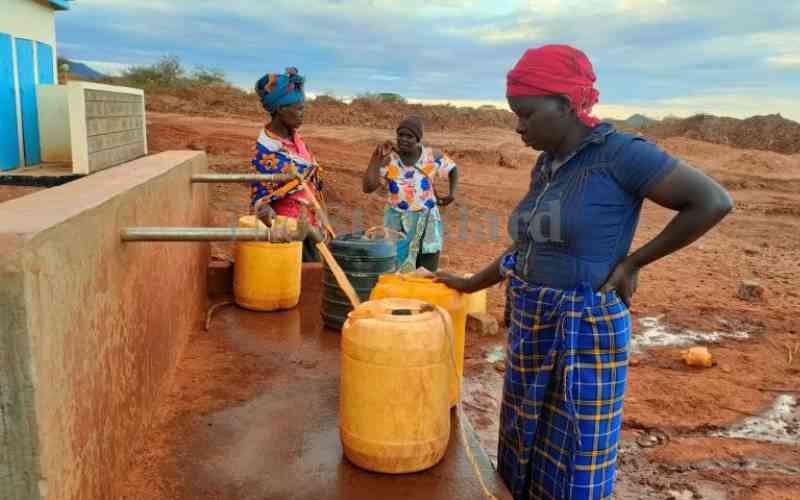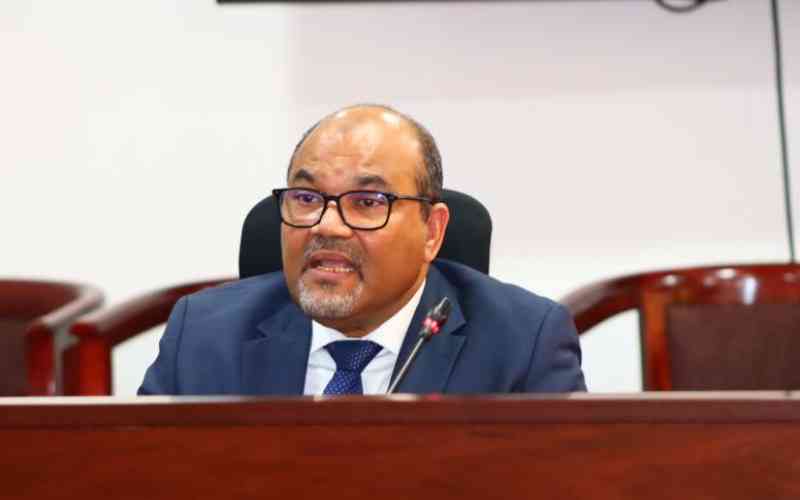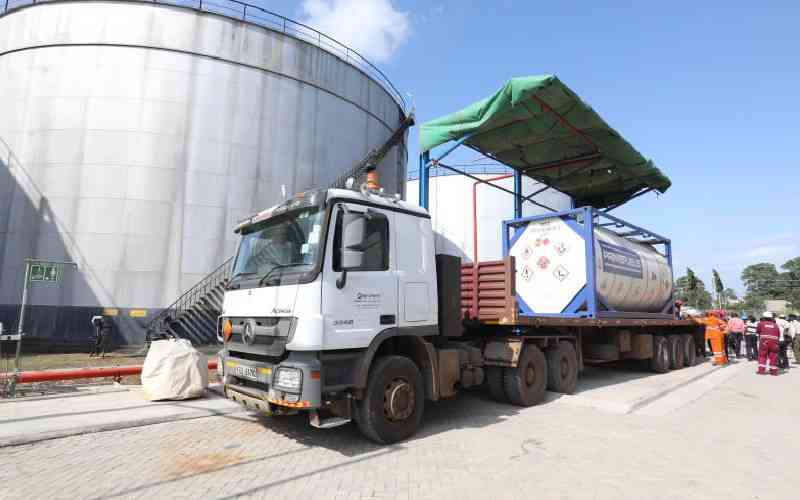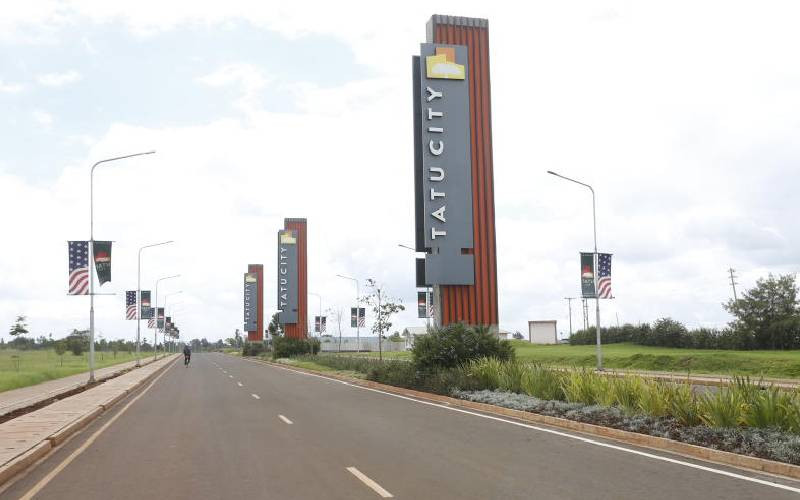×
The Standard e-Paper
Kenya’s Boldest Voice

It is a hot but calm afternoon at Kaliwa Kasyungemi earth dam, located at Mumoni area of Kaliwa sub-location in Mwingi North.
A group of women draw water from taps into their jerrycans while few metres away, livestock including goats, cows, sheep and donkeys drink water from a trough. Agnes Mwikali, a resident, says that the process of fetching water here is fast.






